Ancient Secrets Of The Damascus Steel – Legendary Metal Used By Crusaders And Other Warriors
Ellen Lloyd - AncientPages.com - When the Crusaders reached the Middle East in the 11th century, they discovered swords made of a metal that could slice a hair in half in mid-air, and yet it was strong enough to strike fear into even the bravest and most persistent warrior.
A shamshir (Persian/Iranian sword with a radical curve. The Royal Armoury, Stockholm, Sweden. Unknown author - LSH 77113 - Public Domain
Knowledge of the legendary metal spread, and it became known to the Europeans as the Damascus steel, named after the capital of Syria. Sometime in the 18th century, the formula for Damascus steel was lost, and the original method for producing Damascus steel remains an ancient secret.
Through the ages, armorers who made swords, shields, and armor were rigidly secretive regarding their method, and the formula of the Damascus steel was only known to a few persons.
Many modern attempts have been made to reproduce the metal, but no one has succeeded due to differences in raw materials and manufacturing techniques.
Damascus Steel And Its Remarkable Characteristics
From around the fourth century A.D., Damascus steel was manufactured in several regional locations. The swords produced with Damascus steel were extraordinary because the blades remained devastatingly sharp through battle after battle.
The Damascus steel gave rise to many legends, such as the ability to cut through a rifle barrel or to cut a hair falling across the blade. According to Dr. Helmut Nickel, curator of the Arms and Armor Division of the Metropolitan Museum of Art in New York, legend had it that the best blades were quenched in "dragon blood."
The swords were easily recognized by a characteristic watery or" damask" pattern on their blades." Damascus steel was not only a remarkable feat of engineering but also a thing of aesthetic beauty.
The metal was derived from Wootz, a type of steel originating in India unusually rich in carbon.
Based on archaeological evidence, it has been determined that the production fit the steel started in present-day Tamil Nadu before the start of the Common Era.
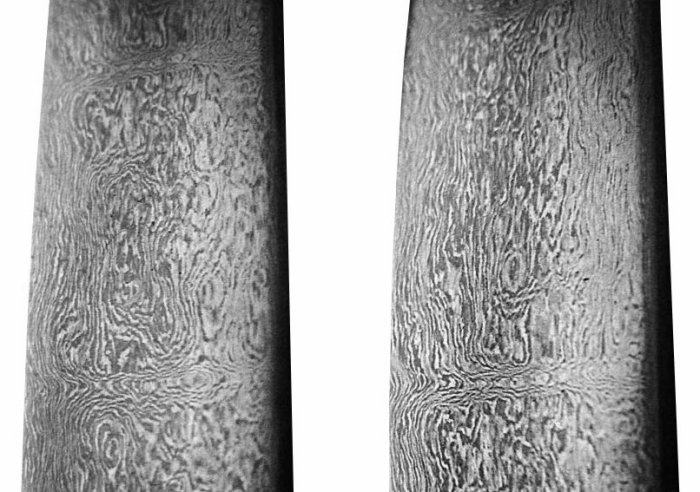 Watered pattern on iranian sword blade. Close-up of an 18th-century Persian-forged Damascus steel sword. Image credit: Rahil Alipour Ata Abadi - GFDL
Watered pattern on iranian sword blade. Close-up of an 18th-century Persian-forged Damascus steel sword. Image credit: Rahil Alipour Ata Abadi - GFDL
The Arabs introduced the Indian wootz steel to Damascus, where a weapons industry thrived. Wootz steel was highly prized across several regions of the world over nearly two millennia, and one typical product made of this Indian steel came to be known as the Damascus swords.
From the 3rd century to the 17th century, India was shipping steel ingots to the Middle East.
Lost Knowledge Of The Damascus Steel Formula
By 1750, the production of Damascus swords gradually declined, and the process was lost to metalsmiths.
Why the swords were no longer produced is still a mystery. It has been suggested that Damascus steel production declined because firearms replaced blades, and there was less demand for metal. Another option is that the knowledge of the Damascus steel formula was only known to a small group and thus lost with time. Swordmakers succeeded in concealing their techniques from competitors and posterity.
It is also possible that the trade routes supplying Wootz from India were disrupted or that raw material supplies no longer had the same essential characteristics.
Modern Attempts To Re-Create Damascus Steel
A significant problem in scientific experiments on Wootz Damascus steel is the inability to obtain samples for study. Such a study requires that the blades be cut into sections for microscopic examination, and small quantities must be sacrificed for destructive chemical analysis.
A sword maker of Damascus, Syria. Image source
When researchers at the Technical University of Dresden used X-rays and electron microscopy to examine Damascus steel, they discovered the presence of cementite nanowires and carbon nanotubes. The study showed that these nanostructures are a result of the forging process.
Jeffrey Wadsworth and Oleg D. Sherby, two metallurgists at Stanford University, may have unraveled the mystery of the Damascus steel. According to Dr. Wadsworth, as suspected by several early metallurgists, an essential requirement is a very high carbon content.
Dr. Wadsworth and Dr. Sherby believe it has to be from 1 to 2 percent, compared to only a fraction of 1 percent in ordinary steel. Another critical element in Damascus blade production is forging and hammering at relatively low temperatures - about 1,700 degrees Fahrenheit. After shaping, the blades were reheated to about the same temperature, then rapidly cooled, as by quenching in a fluid.
"Modern Damascus" is made from several types of steel and iron slices welded together to form a billet, and currently, the term "Damascus" (although technically incorrect) is widely accepted to describe modern pattern-welded steel blades in the trade. The patterns vary depending on how the smith works the billet. The billet is drawn out and folded until the desired number of layers is formed. To attain a Master Smith rating with the American Bladesmith Society, it is necessary to forge a Damascus blade with a minimum of 300 layers.
Recreating Damascus steel is a subfield of experimental archaeology. Many have attempted to discover or reverse-engineer the process by which it was made, and several researchers have come a long way, but to completely reproduce the process has so far not been possible.
Damascus steel is, without doubt, magnificent art and cutting-edge technology that may be lost to humankind forever.
Written by Ellen Lloyd – AncientPages.com
Updated on Aug 13, 2023
Copyright © AncientPages.com All rights reserved. This material may not be published, broadcast, rewritten or redistributed in whole or part without the express written permission of AncientPages.com
Expand for referencesReferences:
Wes Sander, Intermediate Guide to Bladesmithing
More From Ancient Pages
-
 Modern Humans Traveled Across The Eurasian Steppe 45,000 Years Ago
Archaeology | Aug 20, 2019
Modern Humans Traveled Across The Eurasian Steppe 45,000 Years Ago
Archaeology | Aug 20, 2019 -
 Mystery Of The Gotland Grooves – Ancient Astronomical Observatory?
Civilizations | May 11, 2016
Mystery Of The Gotland Grooves – Ancient Astronomical Observatory?
Civilizations | May 11, 2016 -
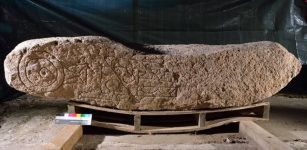 Dandaleith Stone: Scotland’s Rare Symbol Stone Of The Picts – Will It Be Deciphered Now?
Ancient Symbols | Jan 21, 2016
Dandaleith Stone: Scotland’s Rare Symbol Stone Of The Picts – Will It Be Deciphered Now?
Ancient Symbols | Jan 21, 2016 -
 A Scientific Surprise: Bering Land Bridge Formed Late During Last Ice Age
Archaeology | Dec 27, 2022
A Scientific Surprise: Bering Land Bridge Formed Late During Last Ice Age
Archaeology | Dec 27, 2022 -
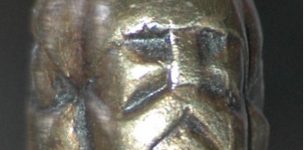 Triglav (Trzygłów) – Powerful Three-Headed Slavic God Of Vigilance, Sea Storms Who Supervised Sky, Earth, And Underworld
Featured Stories | Nov 11, 2019
Triglav (Trzygłów) – Powerful Three-Headed Slavic God Of Vigilance, Sea Storms Who Supervised Sky, Earth, And Underworld
Featured Stories | Nov 11, 2019 -
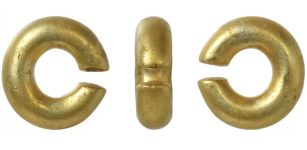 ‘Incredibly Mysterious’ Bronze Age Gold Penannular Ring Found In Norfolk
Archaeology | Apr 24, 2023
‘Incredibly Mysterious’ Bronze Age Gold Penannular Ring Found In Norfolk
Archaeology | Apr 24, 2023 -
 Population Pressure And Prehistoric Violence In The Yayoi Period Of Japan
Archaeology | Aug 30, 2021
Population Pressure And Prehistoric Violence In The Yayoi Period Of Japan
Archaeology | Aug 30, 2021 -
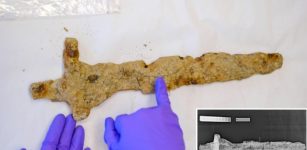 Rare Ulfberht Viking Sword Discovered In Suldal, Norway
Archaeology | May 31, 2024
Rare Ulfberht Viking Sword Discovered In Suldal, Norway
Archaeology | May 31, 2024 -
 Ancus Marcius: Semi-Legendary Fourth King Of Rome Obliged To Make War To Defend And Expend Territories
Featured Stories | Jul 12, 2019
Ancus Marcius: Semi-Legendary Fourth King Of Rome Obliged To Make War To Defend And Expend Territories
Featured Stories | Jul 12, 2019 -
 Jade Emperor – Supreme Ruler Of Heaven In Chinese Mythology
Chinese Mythology | Feb 21, 2019
Jade Emperor – Supreme Ruler Of Heaven In Chinese Mythology
Chinese Mythology | Feb 21, 2019 -
 ‘Collata Quipu’ May Explain Messages Hidden In Mysterious Writing Of Inca
Archaeology | May 10, 2017
‘Collata Quipu’ May Explain Messages Hidden In Mysterious Writing Of Inca
Archaeology | May 10, 2017 -
 Is There An Ancient Secret Connection Between The Statue Of Liberty And The Anunnaki Goddess Inanna?
Featured Stories | Sep 28, 2018
Is There An Ancient Secret Connection Between The Statue Of Liberty And The Anunnaki Goddess Inanna?
Featured Stories | Sep 28, 2018 -
 Mysterious Moon-Eyed People – Ancient Subterranean Race In Conflict With The Cherokee
Featured Stories | Dec 28, 2017
Mysterious Moon-Eyed People – Ancient Subterranean Race In Conflict With The Cherokee
Featured Stories | Dec 28, 2017 -
 Roman Square Capitals: Prestigious Script That Delighted Human Eye With Its Elegance
Featured Stories | Sep 16, 2019
Roman Square Capitals: Prestigious Script That Delighted Human Eye With Its Elegance
Featured Stories | Sep 16, 2019 -
 Old Unexplained Mystery Of The Frightening Woman On The Isle Of Iona
Featured Stories | Mar 8, 2024
Old Unexplained Mystery Of The Frightening Woman On The Isle Of Iona
Featured Stories | Mar 8, 2024 -
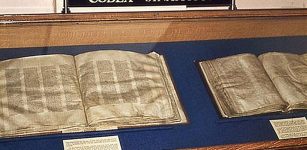 World’s oldest bible -The Codex Sinaiticus – to be displayed at the British Museum
News | Sep 1, 2015
World’s oldest bible -The Codex Sinaiticus – to be displayed at the British Museum
News | Sep 1, 2015 -
 Robert The Bruce: Mighty King Of Scots And Great Scottish Hero
Featured Stories | Oct 13, 2016
Robert The Bruce: Mighty King Of Scots And Great Scottish Hero
Featured Stories | Oct 13, 2016 -
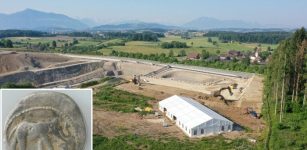 Why Are The 2,000-Year-Old Roman Walls Found In Switzerland An ‘Archaeological Sensation’?
Archaeology | Sep 15, 2023
Why Are The 2,000-Year-Old Roman Walls Found In Switzerland An ‘Archaeological Sensation’?
Archaeology | Sep 15, 2023 -
 On This Day In History: Battle Of Langside Was Fought – On May 13, 1568
News | May 13, 2016
On This Day In History: Battle Of Langside Was Fought – On May 13, 1568
News | May 13, 2016 -
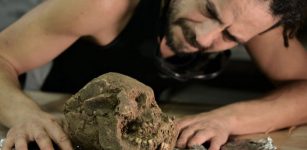 Lady SAS – Ancient Skeleton Of Foreign Woman Found In Palenque – Who Was She?
Archaeology | Apr 11, 2023
Lady SAS – Ancient Skeleton Of Foreign Woman Found In Palenque – Who Was She?
Archaeology | Apr 11, 2023


